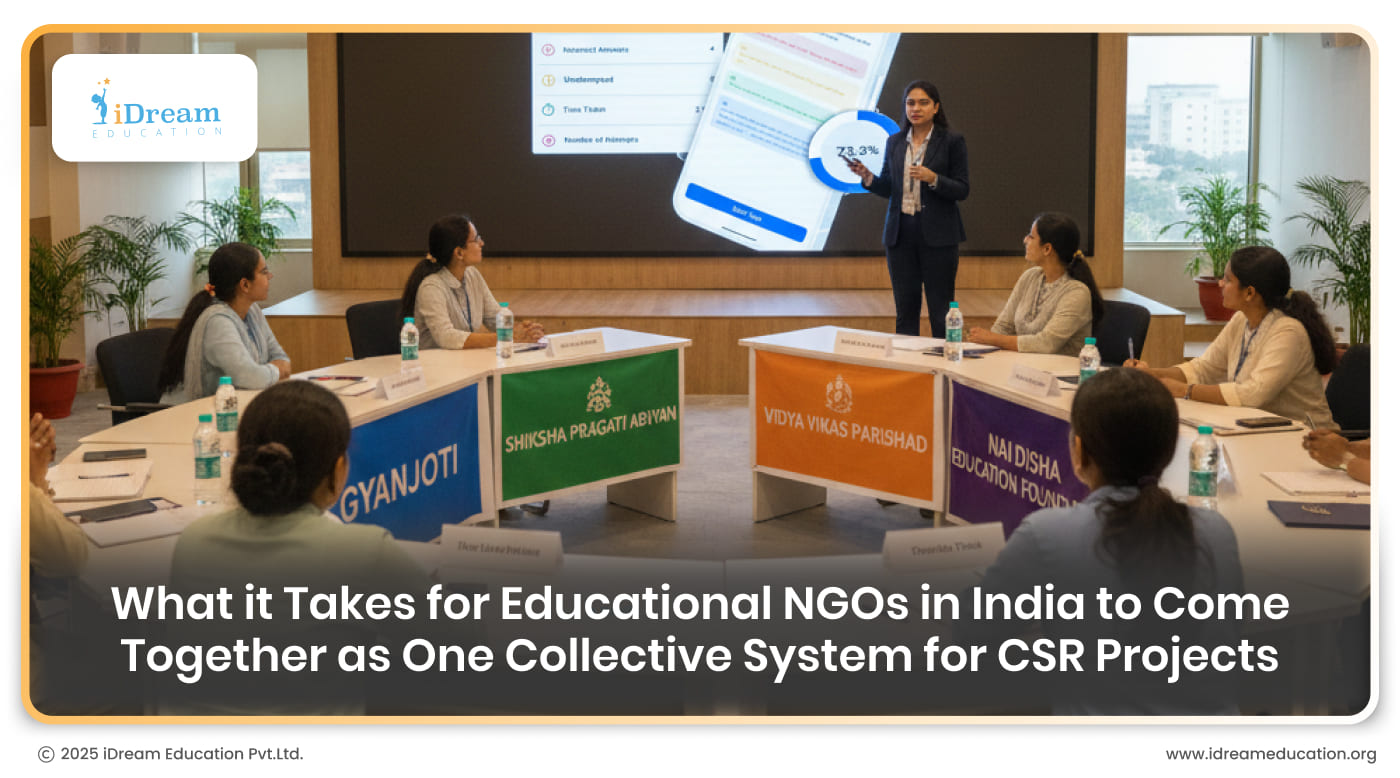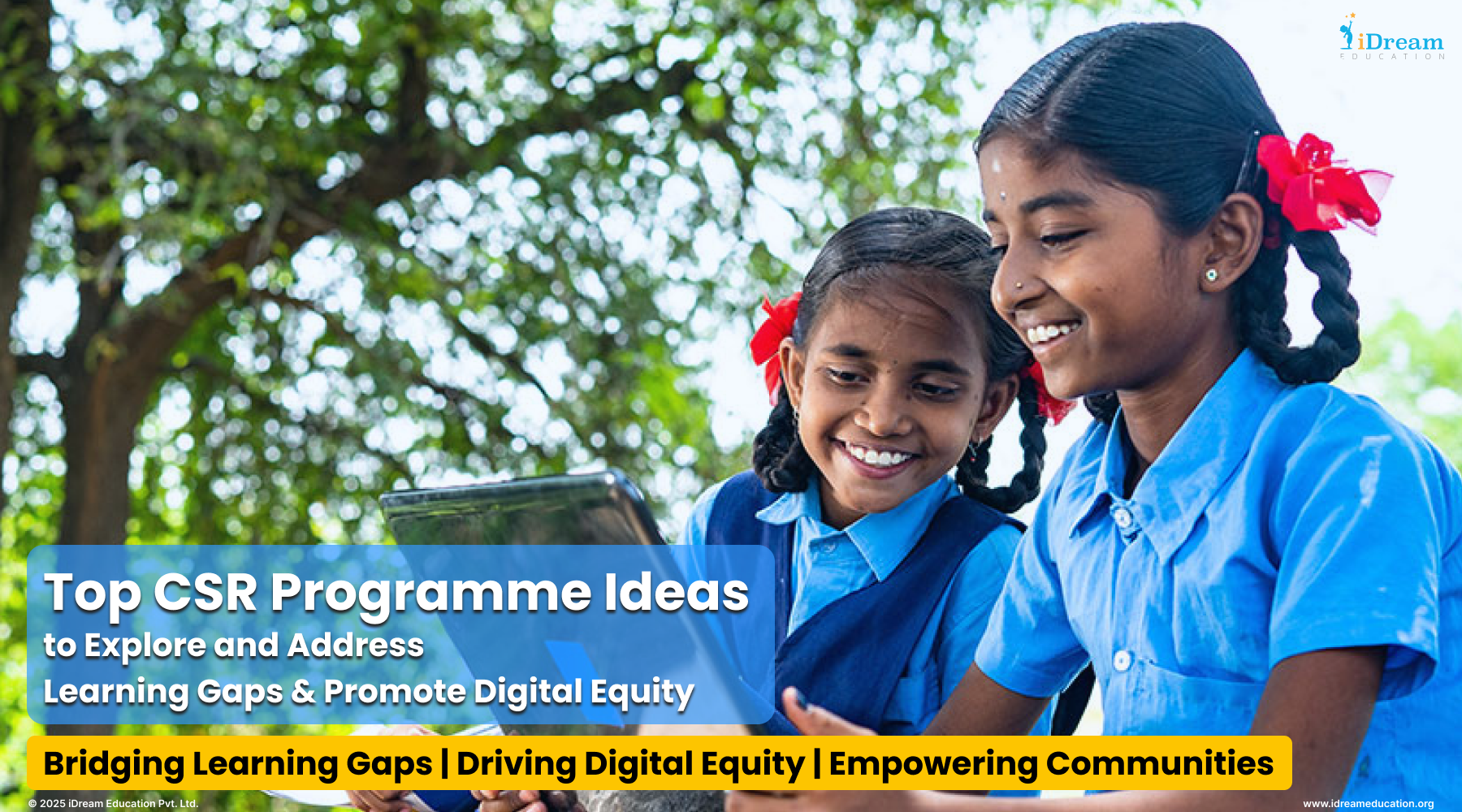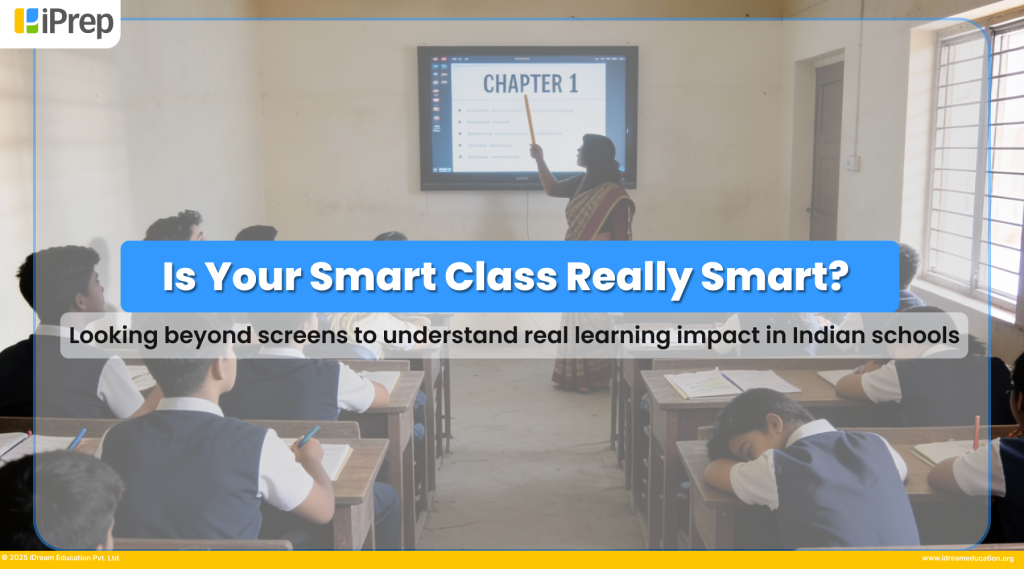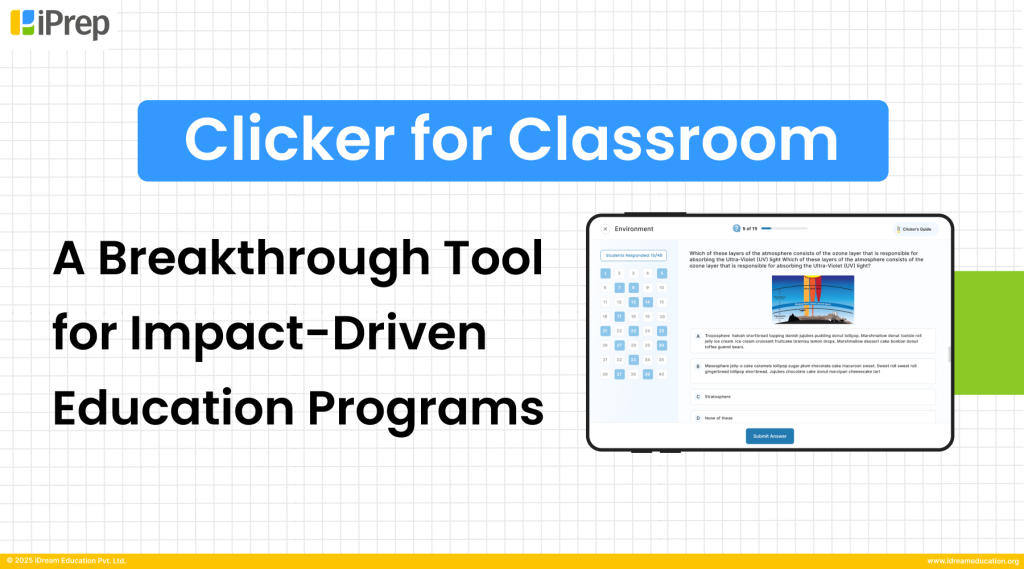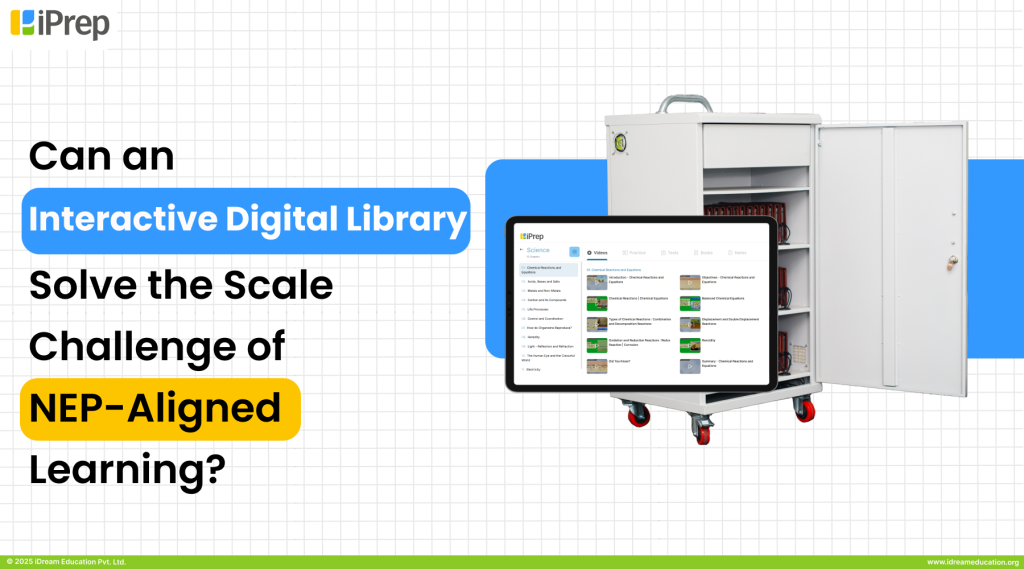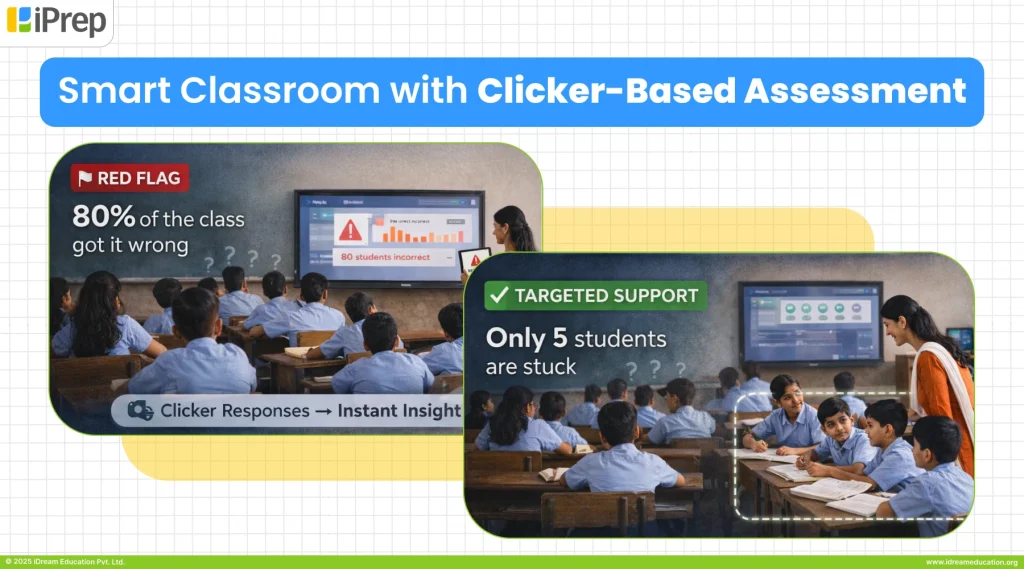
According to ASER 2024, only 27% of Class 3 students in Indian government schools can read a Class 2-level text. And about one-third can solve simple subtraction problems. We’re getting students in the classroom, which is great but the big question remains: how do we know they’re actually learning? And if they aren’t, how soon do we find out and fix it? Because when we discover the gap too late, it’s often too wide to fix quickly.
This is where clicker-based assessments become essential as they enable teachers to identify and address learning gaps within minutes, not months. Clicker-based assessments offer a solution that transforms traditional classroom evaluation into interactive, real-time student evaluation and learning experiences.
What Education Partners Are Struggling With?
CSR departments and education administrators are deeply committed to making a difference. But what they often lack is timely, actionable insight that can truly impact learning.
- By the time annual exam results come in, it’s too late to help students who are struggling.
- Teachers are very busy and have much to deal with.
- The number of data gathering tools is high, whereas the number of useful tools in everyday teaching is small.
- Assessments often feel like just another sheet to check, rather than a meaningful part of learning.
For CSR partners working within budget constraints and NGOs managing multiple school partnerships, these challenges become even more complex. And as a result we’re spending a lot of time measuring learning, but not enough time actually facilitating it.
Understanding Clicker-Based Assessments & Implementing Them
Clicker-based assessments are a perfect solution to bridge the learning gap. It is an excellent tool for formative assessment of school students. Imagine this: A student answers a question in class and not in a monthly test where checking test papers takes time, but right there, in the moment. The teacher gets instant insight. The student gets immediate feedback and hence, learning outcomes become measurable and actionable.
Many government schools already have the basic technology needed such as tablets or interactive smart boards which enables clicker-style assessments.
So, how can Indian government schools implement clicker-based assessment systems that create meaningful learning impact? Let’s break it down step-by-step.
Step 1: Start With the ‘Why’ Behind Clicker-Based Assessments
Before the introduction of any new solution, education departments, CSR partners, and implementing NGOs should first outline the reason why they are introducing clicker-based assessments in a classroom.
Is the goal to increase student engagement? Diagnose learning gaps in real-time? Support teachers with actionable insights? Whatever the core objective, it should be clearly outlined from the start.
But here’s where successful partnerships begin: this clarity must be developed collaboratively with teachers, school leaders, and your implementation team. iDream Education enables education departments and CSR partners to facilitate these conversations through structured planning sessions that align assessment goals with ground realities.
Our experience from education partnerships across India shows that when purpose is communicated early and openly, it empowers a sense of ownership and confidence among all stakeholders.
Step 2: Equip the Teachers, Not Just the Classrooms
Technology is only as effective as the people using it. That’s why teacher preparation matters more than the devices themselves. And this preparation goes far beyond technical button-pushing. It’s about familiarising them with:
- Creating or selecting relevant assessments
- Analysing real-time performance dashboards
- Using the data to adapt their teaching methods
iDream Education partners with education departments to design teacher preparation programs that focus on practical application rather than technical training alone, ensuring sustainable adoption across diverse school environments.
Step 3: Start Small. Think One Class, One Grade, One Week
Rolling out technology across an entire school simultaneously can overwhelm both teachers and systems. It can be done, but it’s likely to be disorganized and typically takes 4 to 6 weeks. An effective approach we’ve seen is to pilot clicker-based assessments in one classroom or grade. Choose a teacher open to experimentation, monitor usage, collect feedback, and refine.
This approach worked well in East Jaintia Hills, Meghalaya, where iDream Education with the help of a focused pilot brought digital smart classrooms and offline assessments to 50 government schools. Within months, assessment practices became routine habits, and students actively treated quizzes not as tests, but as part of learning.
The pilot proved that with the right setup and support, clicker-style digital assessments can also become a natural classroom habit, even in remote, resource-limited settings. This phased approach also helps manage implementation costs which is crucial for CSR budget planning.
Step 4: Align the Questions to Curriculum. Keep It Local, Keep It Real.
Meaningful assessment starts with properly framed questions that reveal a student’s understanding. So ensure curriculum-aligned clicker assessments.
- Are they aligned with the NCERT/State Board curriculum?
- Are they translated and localised for students who learn in regional languages?
- Are they designed to assess understanding, not just memory?
This is where content partnership becomes crucial. iDream Education addresses these alignment challenges through curriculum-mapped assessment banks available in multiple Indian languages, designed specifically for NCERT and State Board requirements.
Our bilingual content ensures that regional language learners can engage with assessments in familiar linguistic contexts while maintaining academic rigor. Rather than generic quiz templates, these assessments are crafted to reveal conceptual understanding patterns that guide instructional decisions.
Step 5: Go Beyond Scores. Track Trends, Not Just Toppers.
Clicker-based assessments provide real-time data that changes everything. Rather than discovering learning gaps months later through annual assessments, teachers can now work with students to identify challenging concepts within minutes of teaching.
This is particularly powerful for CSR partners and education departments. Instead of anecdotal updates, you now get dashboards and heatmaps that provide clear, visual insights into learning gaps, content effectiveness, and program reach, enabling CSR partners to demonstrate measurable impact through data-driven reporting.
Step 6: Make It a Habit, Not a Highlight
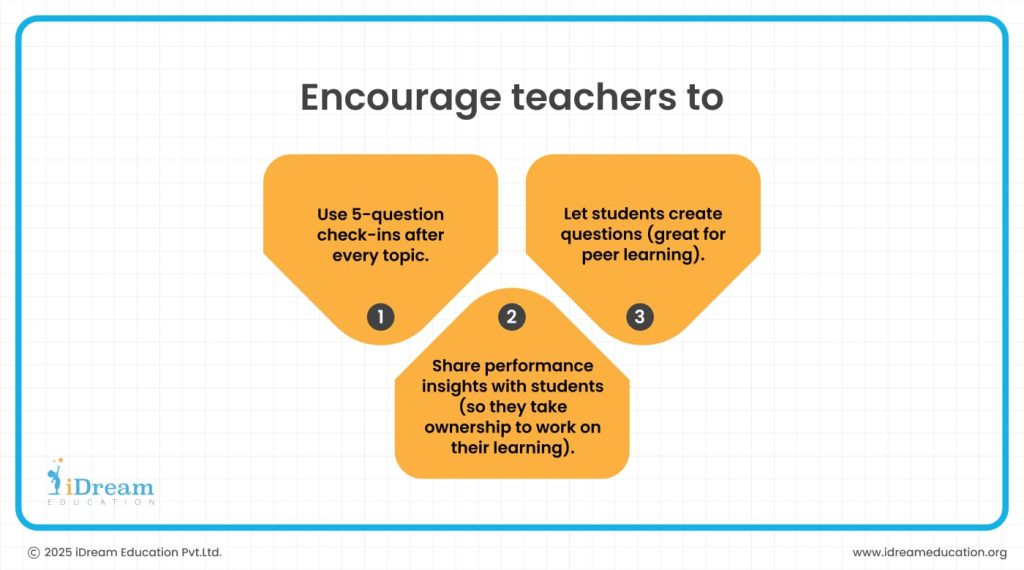
Clickers shouldn’t be the “fun thing we did last Thursday”, making it a long term adoption should be the objective. The real value comes when they’re woven into everyday classroom practice just like homework and revision sessions. We can start by aiming for 2-3 clicker sessions per week initially.
Encourage teachers to:
- Use 5-question check-ins after every topic.
- Let students create questions (great for peer learning).
- Share performance insights with students (so they take ownership to work on their learning).
When clicker-based assessments become part of natural teaching rhythm, they create consistent feedback loops that benefit both students and teachers.
Step 7: Close the Feedback Loop With Students, Teachers, and Admins
So you ran the assessments. You got the data. Now what?
This is where the real opportunity lies where we think beyond data collection to meaningful action.
Instead, use those insights to:
- Organize monthly feedback sessions with teachers, quarterly reviews with administrators where you talk about, what worked, what didn’t?
- Share anonymised insights with parents or SMCs.
- Track teacher confidence levels and student engagement scores.
- Document cost-per-learning-outcome improvements for future CSR planning.
In Conclusion
The path from data collection to learning transformation isn’t just about having the right technology. It’s about having the right partner who understands both classroom realities and implementation complexities.
iDream Education empowers CSR departments and government education partners to bridge this gap through curriculum-aligned assessment solutions that work within existing infrastructure. Our experience across diverse educational settings has shown that when clicker-based assessments are implemented with proper content alignment and teacher support, learning outcomes improve measurably within months, not years.
Not only this formative assessment tool allows live tracking of learning outcomes in the class for a topic or a set of topics, it also helps identify the learning level of the class and also each student so that we know what to work on as a class and where a student needs help. This is a proactive approach to get feedback of how well learners are getting adept to topics taught, and bridge learning gaps, and addressing the fact that there are students with different learning level and abilities.
For education administrators and CSR partners ready to move beyond measuring learning to actually enabling it, clicker-based assessments represent a practical first step toward universal access to quality education. The question isn’t whether your students can learn, it’s whether we’re giving them the right tools to show us what they know, when they need support, and how quickly they can grow.
To learn more, you may contact us at +91 7678265039.
You can also share your details here or write to us share@idreameducation.org.


